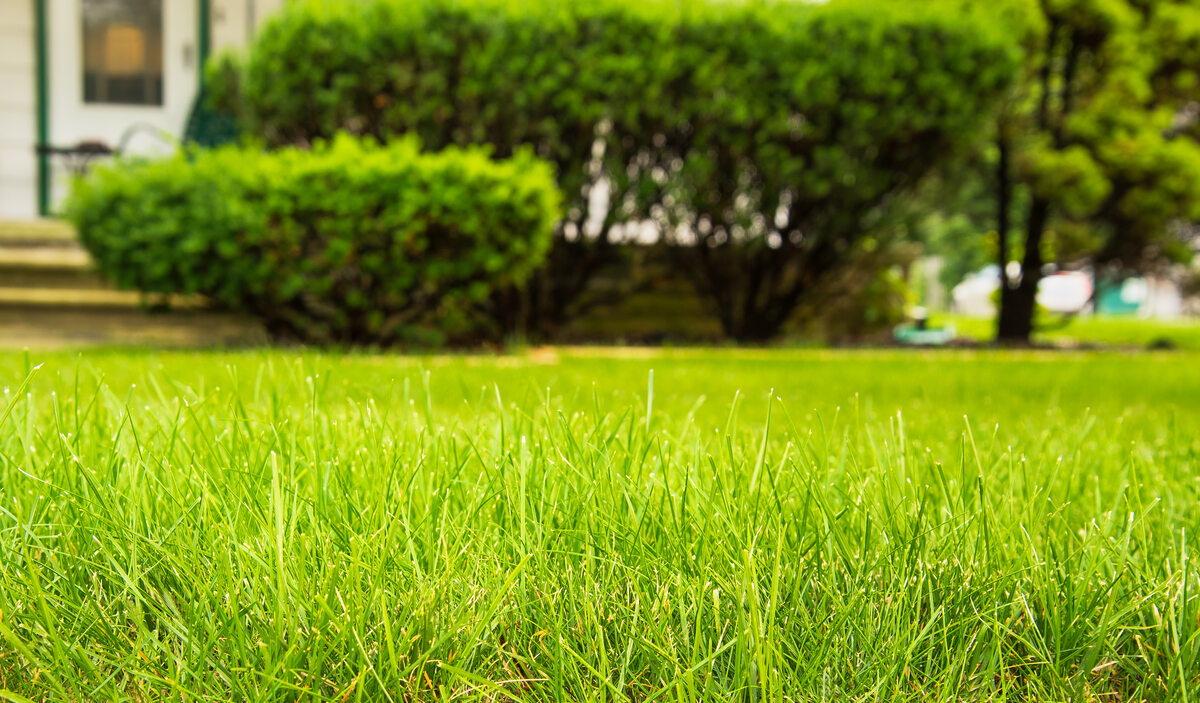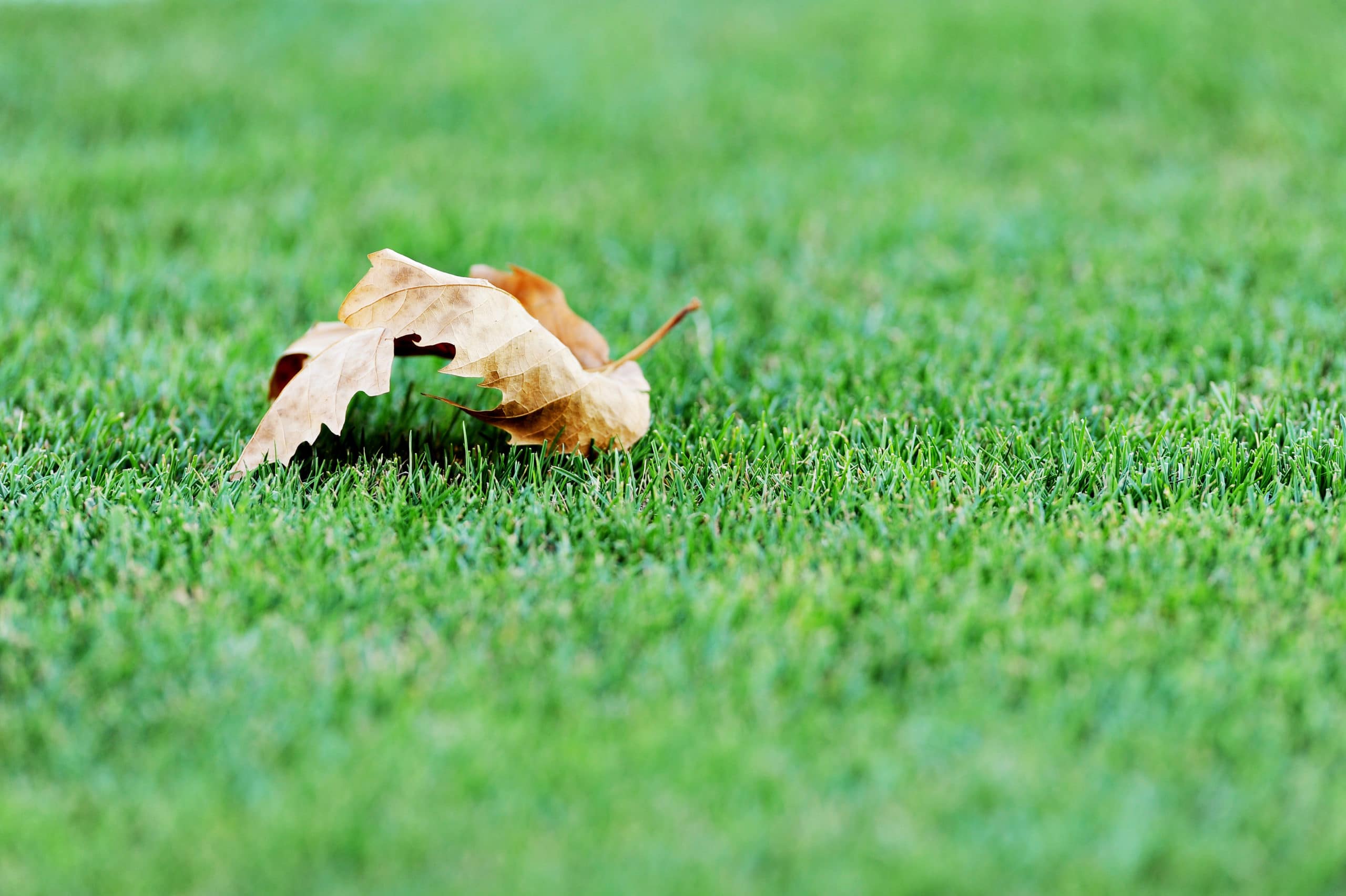Home>Gardening & Outdoor>Landscaping Ideas>How To Get The Perfect Grass


Landscaping Ideas
How To Get The Perfect Grass
Modified: October 18, 2024
Learn the best landscaping ideas for achieving the perfect grass. Discover expert tips and techniques for your lawn. Start transforming your yard today!
(Many of the links in this article redirect to a specific reviewed product. Your purchase of these products through affiliate links helps to generate commission for Storables.com, at no extra cost. Learn more)
Introduction
So, you want to transform your yard into a lush, green paradise? You've come to the right place! Achieving the perfect grass requires a combination of knowledge, patience, and a little bit of elbow grease. Whether you're starting from scratch or revitalizing an existing lawn, this comprehensive guide will walk you through the essential steps to cultivate the envy of the neighborhood.
The journey to a pristine lawn begins with understanding the unique characteristics of your soil. By identifying its composition and pH levels, you can select the optimal grass seed and tailor your maintenance routine to ensure vibrant, healthy growth. With the right knowledge and approach, you'll be well on your way to enjoying a vibrant, resilient lawn that enhances the beauty of your outdoor space.
In the following sections, we'll delve into the crucial factors that contribute to the perfect grass, including soil analysis, grass seed selection, soil preparation, planting techniques, watering and maintenance practices, as well as mowing and trimming tips. Additionally, we'll address common issues that may arise and provide effective solutions to keep your grass thriving.
By the end of this guide, you'll be equipped with the insights and techniques needed to nurture a stunning lawn that serves as a testament to your dedication and love for the natural beauty of your outdoor space. So, roll up your sleeves and get ready to embark on a journey toward the perfect grass!
Key Takeaways:
- Understanding your soil’s texture, drainage, and pH levels is crucial for selecting the right grass seed and creating an optimal environment for successful lawn growth.
- Proper soil preparation, thoughtful watering, and diligent maintenance are essential for nurturing healthy, vibrant grass that enhances the natural beauty of your outdoor space.
Read more: How To Get Grass To Spread
Understanding Your Soil
Before diving into the exciting world of grass seed selection and lawn care, it’s crucial to understand the foundation of it all: your soil. The composition and characteristics of your soil play a pivotal role in determining the success of your lawn. By gaining insights into its texture, drainage, and pH levels, you can make informed decisions that will set the stage for optimal grass growth.
One of the first steps in understanding your soil is to assess its texture. Is it predominantly sandy, loamy, or clayey? Sandy soil tends to drain quickly but may struggle to retain nutrients, while clayey soil holds moisture well but can become compacted. Loamy soil, a balanced mixture of sand, silt, and clay, is often considered ideal for grass growth due to its excellent drainage and nutrient retention capabilities.
Next, consider the drainage patterns in your yard. Does water pool in certain areas, or does it swiftly dissipate? Proper drainage is essential for the health of your grass, as excessive water accumulation can lead to root rot and other issues. Understanding your soil’s drainage characteristics will guide your watering practices and help you address any potential drainage issues.
Furthermore, assessing the pH of your soil is crucial. The pH level indicates the acidity or alkalinity of the soil, influencing nutrient availability to your grass. Most grasses thrive in slightly acidic to neutral soil, with a pH range of 6.0 to 7.5. Conducting a simple soil test will reveal your soil’s pH, enabling you to make any necessary adjustments to create an optimal environment for your chosen grass variety.
By comprehensively understanding your soil, you can select the most suitable grass seed and implement targeted soil improvement strategies. Armed with this knowledge, you’ll be well-prepared to take the next steps towards cultivating the perfect grass in your outdoor oasis.
Choosing the Right Grass Seed
When it comes to achieving the perfect lawn, selecting the right grass seed is a critical decision that directly impacts the overall health and appearance of your turf. The ideal grass seed for your lawn depends on various factors, including your region’s climate, the amount of sunlight your yard receives, and the specific attributes of the grass species.
First and foremost, consider your local climate and the grasses that thrive in your region. Cool-season grasses, such as Kentucky bluegrass and fescue, flourish in northern climates with cold winters and moderate summers. On the other hand, warm-season grasses like Bermuda grass and Zoysia grass are well-suited to southern regions with hot summers and mild winters. Understanding your climate zone is essential for choosing grass varieties that will thrive in your specific environment.
Another crucial factor to consider is the amount of sunlight your lawn receives. Some grass species, like fine fescues, are shade-tolerant and thrive in areas with limited sunlight, making them an excellent choice for shaded yards. Conversely, sun-loving grasses such as Bermuda grass and Bahia grass require ample sunlight to thrive and are well-suited to open, sunny lawns.
Furthermore, take into account the specific attributes of different grass species. For example, if you desire a lush, fine-textured lawn, you might opt for Kentucky bluegrass. If drought tolerance and minimal maintenance are priorities, Buffalo grass could be the perfect choice. By understanding the unique characteristics of various grass species, you can select the one that aligns with your aesthetic preferences and maintenance capabilities.
Additionally, consider factors such as foot traffic tolerance, disease resistance, and water requirements when choosing the right grass seed for your lawn. By carefully evaluating these aspects and matching them to your specific needs, you can ensure that your chosen grass variety will thrive and contribute to the overall beauty of your outdoor space.
By taking these considerations into account, you can confidently select the perfect grass seed that will lay the foundation for a vibrant, resilient lawn that enhances the natural allure of your home’s exterior.
Preparing the Soil
Before sowing the seeds of your dream lawn, it’s essential to prepare the soil to create an optimal environment for grass seed germination and growth. Proper soil preparation sets the stage for healthy root development and vigorous grass growth, ultimately contributing to the lush, resilient lawn you envision.
Begin by clearing the area of any debris, such as rocks, sticks, and existing vegetation, to create a clean canvas for your new lawn. This step ensures that the grass seeds make direct contact with the soil, promoting successful germination and establishment.
Next, consider the soil’s structure and composition. If your soil is compacted, aerating it can enhance its ability to absorb water and nutrients, fostering healthier grass growth. Aeration involves perforating the soil with small holes to alleviate compaction and improve air circulation, promoting robust root development and overall turf health.
After addressing compaction, it’s time to enrich the soil with organic matter. Incorporating compost or well-decomposed manure into the soil enhances its fertility and structure, providing essential nutrients and improving water retention. This organic amendment contributes to a thriving soil ecosystem, fostering beneficial microbial activity and supporting the long-term health of your lawn.
Furthermore, consider the application of a high-quality starter fertilizer to provide the young grass seedlings with essential nutrients for vigorous growth. A balanced fertilizer with a higher phosphorus content can support strong root development, setting the stage for a resilient and lush lawn.
Once the soil is cleared, aerated, enriched with organic matter, and fertilized, it’s time to level the surface to create a uniform and smooth seedbed. Raking the soil to remove any bumps or depressions ensures even seed distribution and promotes consistent germination and growth across the entire lawn area.
By thoroughly preparing the soil, you establish the groundwork for a thriving lawn that exhibits robust growth and resilience. This vital step sets the stage for successful grass establishment and lays the foundation for a visually stunning and healthy outdoor space.
Planting the Seed
With the soil meticulously prepared, it’s time to embark on the exciting process of planting the grass seed that will eventually transform your yard into a verdant paradise. Proper seeding techniques and mindful care during the germination phase are essential for establishing a dense, healthy lawn that will be the envy of the neighborhood.
Before spreading the seed, carefully select the appropriate seeding rate for your chosen grass species. Different grass varieties require specific seeding rates to achieve optimal coverage and density. Consulting the seed packaging or reputable gardening resources can provide guidance on the recommended seeding rate for your selected grass type.
When distributing the seed, aim for uniform coverage to ensure consistent germination and growth. Using a seed spreader or broadcaster can facilitate even seed distribution, minimizing the risk of sparse or patchy areas in your lawn. After spreading the seed, gently rake the soil to incorporate the seeds into the top layer, promoting good seed-to-soil contact, which is crucial for successful germination.
Once the seed is sown and incorporated into the soil, it’s time to provide the young seedlings with the moisture essential for germination and early growth. Lightly water the seeded area, ensuring that the soil remains consistently moist but not waterlogged. Adequate moisture is crucial for encouraging the seeds to sprout and the emerging grass seedlings to establish strong, healthy root systems.
During the germination phase, it’s important to protect the seeded area from disturbances that could disrupt the delicate seedlings. Consider using a biodegradable straw or erosion control blanket to shield the soil and emerging grass from erosion, harsh weather, and potential damage caused by birds or other wildlife.
As the grass seedlings begin to emerge, continue to monitor the soil moisture and provide gentle irrigation as needed to support their development. Avoid heavy watering that could dislodge the delicate seedlings, and gradually transition to a deeper, less frequent watering schedule as the grass establishes itself.
By following these essential steps and providing attentive care during the critical germination phase, you set the stage for the successful establishment of a vibrant, resilient lawn. The careful attention given to planting the seed will yield lush, healthy grass that enhances the natural beauty of your outdoor space.
Water your grass deeply and infrequently to encourage deep root growth, making it more drought-resistant and healthier overall. Aim for 1-1.5 inches of water per week, including rainfall.
Read more: How To Get The Best Grass
Watering and Maintenance
Once your grass seedlings have taken root and begun their journey toward lush maturity, thoughtful watering and diligent maintenance are essential to nurture their growth and ensure the development of a healthy, vibrant lawn. By adopting proper watering practices and implementing a structured maintenance routine, you can support the resilience and beauty of your grass, ultimately reaping the rewards of a stunning outdoor oasis.
Watering plays a pivotal role in the early stages of grass establishment. Initially, focus on keeping the soil consistently moist to facilitate the growth of the young seedlings. Light, frequent watering is preferable during this phase, as it promotes the development of robust root systems and encourages the grass to establish itself firmly in the soil.
As the grass matures, gradually transition to a deeper, less frequent watering schedule to encourage the development of deep, drought-resistant roots. Deep watering promotes stronger, more resilient grass that can withstand periods of dryness, ultimately contributing to a healthier and more sustainable lawn.
Regular maintenance tasks, such as mowing, fertilizing, and aerating, are integral to the long-term health and beauty of your lawn. When mowing, adhere to the one-third rule, ensuring that you never remove more than one-third of the grass blade’s height in a single mowing session. This practice prevents stress on the grass and encourages strong, healthy growth.
Fertilizing your lawn at the appropriate times and with the right nutrients is crucial for sustaining its vitality. Consider using a slow-release fertilizer to provide a steady supply of essential nutrients to the grass over an extended period, promoting consistent growth and resilience.
Aerating the soil at regular intervals enhances air and water penetration, alleviates compaction, and stimulates healthy root development. This process is particularly beneficial for lawns with dense, compacted soil, as it facilitates the exchange of gases and nutrients, fostering a robust and thriving grass ecosystem.
Additionally, be vigilant in addressing any weeds, pests, or diseases that may threaten the well-being of your lawn. Promptly identifying and treating these issues can prevent them from spreading and causing extensive damage to your grass, preserving its lush, vibrant appearance.
By embracing proper watering practices and implementing a comprehensive maintenance regimen, you can nurture a resilient, visually captivating lawn that enriches the natural allure of your outdoor space. Thoughtful care and attention to detail will reward you with a stunning, healthy lawn that serves as a testament to your dedication and love for the beauty of nature.
Mowing and Trimming
Mowing and trimming are essential aspects of lawn care that contribute to the overall health, appearance, and resilience of your grass. By adopting proper mowing techniques and meticulous trimming practices, you can maintain a well-groomed lawn that exudes natural beauty and enhances the visual appeal of your outdoor space.
When it comes to mowing, it’s crucial to adhere to the one-third rule, which stipulates that you should never remove more than one-third of the grass blade’s height in a single mowing session. This practice prevents stress on the grass and promotes strong, healthy growth. Additionally, varying the mowing pattern and direction with each session can prevent the grass from developing a grain and encourage upright, balanced growth.
Regular mowing not only maintains the aesthetic appeal of your lawn but also stimulates the grass to develop denser, more resilient growth. By keeping the grass at an optimal height, you can create a lush, uniform carpet of green that enhances the natural allure of your outdoor space.
Trimming, particularly along edges, walkways, and landscaping features, adds a polished, refined look to your lawn. Using a string trimmer or lawn edger, carefully define the boundaries of your lawn, creating clean, well-defined edges that accentuate the beauty of your grass and landscaping.
Furthermore, consider leaving grass clippings on the lawn after mowing, as they can act as a natural mulch, returning valuable nutrients to the soil and promoting healthy grass growth. This practice, known as grasscycling, reduces the need for additional fertilization and contributes to the overall well-being of your lawn.
Proper mowing and trimming not only enhance the visual appeal of your lawn but also support its long-term health and resilience. By embracing these essential practices and incorporating them into your regular lawn care routine, you can cultivate a stunning, vibrant lawn that stands as a testament to your dedication to natural beauty.
Dealing with Common Issues
While nurturing a lush, vibrant lawn is a rewarding endeavor, it’s not uncommon to encounter various challenges that can impact the health and appearance of your grass. By familiarizing yourself with common issues such as weeds, pests, diseases, and environmental stressors, you can proactively address these concerns and safeguard the beauty and resilience of your lawn.
Weeds are a persistent nuisance that can detract from the uniformity and lushness of your lawn. Implementing cultural practices such as proper mowing, watering, and fertilization can help prevent weed infestations. Additionally, selective herbicides tailored to target specific weed species can effectively control and eradicate unwanted intruders, restoring the pristine appearance of your grass.
Pests, ranging from insects to small mammals, can pose a threat to the well-being of your lawn. Identifying the specific pests plaguing your grass and implementing targeted control measures, such as natural predators, repellents, or insecticidal treatments, can mitigate the damage caused by these intruders and preserve the health and vitality of your lawn.
Diseases, such as fungal infections and bacterial pathogens, can manifest as discolored patches, thinning areas, or abnormal growth in your lawn. Proper watering practices, adequate air circulation, and disease-resistant grass varieties can help prevent the onset of these issues. If diseases do arise, applying fungicidal treatments and adjusting cultural practices can effectively combat these detrimental forces and restore your lawn’s vigor.
Environmental stressors, including extreme temperatures, drought, and compacted soil, can also impact the health and resilience of your grass. Implementing proper irrigation, aeration, and soil improvement practices can mitigate the effects of these stressors, promoting the sustained vitality of your lawn in the face of challenging environmental conditions.
By diligently monitoring your lawn for signs of these common issues and promptly addressing them with targeted solutions, you can preserve the beauty and strength of your grass, ensuring that it remains a vibrant, resilient centerpiece of your outdoor landscape.
Conclusion
Congratulations on embarking on the journey to achieve the perfect grass for your outdoor sanctuary! Cultivating a lush, resilient lawn is a rewarding endeavor that enriches the natural beauty of your home’s exterior and provides a serene, inviting space for relaxation and recreation. By integrating the essential elements of soil understanding, grass seed selection, meticulous soil preparation, and attentive care and maintenance, you can nurture a stunning lawn that stands as a testament to your dedication and love for the natural world.
Understanding your soil’s unique characteristics, including its texture, drainage, and pH levels, provides invaluable insights that guide your grass seed selection and cultivation practices. By choosing the right grass seed tailored to your region’s climate, sunlight conditions, and specific grass species attributes, you lay the foundation for a vibrant, resilient lawn that thrives in its environment.
Thoroughly preparing the soil, incorporating organic matter, and providing essential nutrients through fertilization create an optimal environment for successful grass seed germination and establishment. Thoughtful watering practices, diligent maintenance, and attentive care during the critical germination phase are essential for nurturing the growth of your grass seedlings and ensuring the development of a healthy, vibrant lawn.
By embracing proper mowing techniques, meticulous trimming practices, and proactive measures to address common issues such as weeds, pests, diseases, and environmental stressors, you safeguard the beauty and resilience of your lawn, preserving its lush, inviting allure.
As you continue to tend to your lawn with care and dedication, you’ll witness the transformation of your outdoor space into a captivating, verdant oasis that reflects the harmony and beauty of nature. Your commitment to nurturing the perfect grass serves as a testament to your appreciation for the natural world and creates a welcoming haven for relaxation, recreation, and cherished moments with loved ones.
May your journey toward the perfect grass be filled with joy, fulfillment, and the enduring beauty of a thriving, vibrant lawn that enriches the tapestry of your outdoor landscape.
Frequently Asked Questions about How To Get The Perfect Grass
Was this page helpful?
At Storables.com, we guarantee accurate and reliable information. Our content, validated by Expert Board Contributors, is crafted following stringent Editorial Policies. We're committed to providing you with well-researched, expert-backed insights for all your informational needs.















0 thoughts on “How To Get The Perfect Grass”